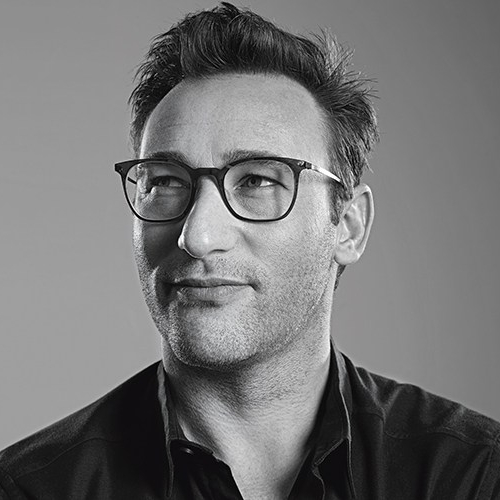Unless you’ve been living under a rock, you’ve likely come across Simon Sinek, the author who took the business world by storm in 2009 with his groundbreaking lecture, How Great Leaders Inspire Action. This talk, which quickly became the third most-watched TED talk of all time, introduced the concept of the ‘Golden Circle’, with ‘Why’ at its core. If you haven’t already, I strongly recommend reading Start with Why: How Great Leaders Inspire Everyone to Take Action. This best-seller sparked a global movement among companies to embark on a ‘why’ journey, fuelling an obsession with purpose in business.
While his next book, Leaders Eat Last, received mixed reviews, Sinek returned to form with his 2019 book, The Infinite Game: How Great Businesses Achieve Long-lasting Success. In this latest work, he masterfully applies game theory to examine how truly exceptional businesses achieve enduring success.
Great leaders inspire
The idea that businesses with a clear sense of purpose are more likely to experience rapid growth is widely accepted. Other writers, such as David Hieatt, have expanded on this idea in their works, including his book Do Purpose – Why Brands with a Purpose Do Better and Matter More and his interview on Curious Leadership podcast. I believe in the significance of purpose in shaping the culture of a business and have observed how it can transform a company. I have previously written about how business leaders can identify their core purpose and use it as a guiding force. Simon La Fosse, another guest on a podcast I host, founded La Fosse Associates, a recruitment firm with a clear purpose: treating people well is not only the right thing to do but also leads to better business outcomes. In our conversation, Simon discussed the ups and downs of his journey, including the previous year’s loss of half their revenue in the tech sector, where they specialise. He also explained why he stepped down as CEO and how he doesn’t consider himself a natural leader. Simon is humble and very much a leader eats last founder.
What’s the thrust of Simon Sinek’s message?
Sinek delves into a fundamental question: Why do companies like Apple achieve extraordinary success while others with similar resources falter? He discovers a crucial distinction—less successful companies typically start with ‘what’ they do, then move on to ‘how’, and many fail to even consider ‘why’. The most startling revelation is that some companies haven’t the faintest idea why they do what they do beyond simply making money.
Very few of our clients can articulate their why when we start working with them. I ask ‘why do you do what you do?’ They almost always answer with a what. So I ask them again, and I get another what. So I say, why does that matter? Another what. Eventually, we get to why. This isn’t easy!
This lack of clarity around purpose often spells the difference between mediocrity and greatness. In contrast, companies like Apple, which lead with a strong sense of ‘why’, connect on a deeper level with their audience, fostering loyalty and innovation that sets them apart.
Sinek’s insights are captured powerfully in his video, Most Leaders Don’t Even Know the Game They’re In. He argues that many leaders are playing a finite game, focused on short-term goals and immediate gains, rather than embracing the infinite game of long-term vision and purpose. This, according to Sinek, is the key to building enduring, successful businesses that stand the test of time.
Golden Circle with Simon Sinek
So what is a ‘why statement’? According to Sinek, it is:
“The compelling higher purpose that inspires us and acts as the source of all we do.”
In Sinek’s Ted Talk, he suggests Apple was so successful because it started with ‘why’. This was at the core of Apple’s marketing (pardon the pun!) and the driving force behind its operations. As a result, he argues, Apple was able to attract customers who shared its core beliefs and values.
From this, he designed his ‘Golden Circle’ theory of building strategy.

The Golden Circle by Simon Sinek start with why: how great leaders inspire everyone to take action
Simon Sinek’s analysis is all well and good, but I think something is missing from the golden circle. Apple dominates the global handset market by capturing 66% of industry profits and 32% of the overall handset revenue. But crucially, they weren’t trying to sell a smartphone to everyone. They are targeting a unique value proposition to a tight group of customers for whom the Apple ecosystem is part of their self-worth and their projection into the world.
When Steve Jobs returned and created the world-famous ‘Think Different’ campaign, Apple products were not the best. In fact, they were a bit sh*t. But Apple had identified a sub-set of people – creatives, misfits, dreamers – for whom owning a Mac said something about the sort of off-the-wall people they wanted to be. This proves that you can’t have a ‘why’ unless you know ‘who’ your ‘why’ will appeal to.
So, where I disagree fundamentally with Simon Sinek is his central message of ‘start with why’. I don’t believe this is where you should start at all.
People won’t buy from you until they understand why you do what you do.
No, they won’t buy from you until they realise they are the reason you do it.
Start with ‘who’ not ‘why’
Surely your over-arching goal is to build a successful commercial enterprise? I don’t think you can start this by asking ‘why’. Contrast Simon Sinek’s view of strategy with that of Jim Collins – another great author and motivational speaker. His Hedgehog Concept is something I often refer to with clients. He believes that a successful strategy is formed by overlapping
1) What you are deeply passionate about (your ‘why’) with
2) What you can be best at in the world and
3) What best drives your economic engine.
This third point is missing from Simon Sinek’s Golden Circle viewpoint – the commercial imperative that should drive every business.

Finding your ‘who’
Ultimately, you’re trying to create a tribe that loves what you do and feels like they belong when they experience your company for the first time. I believe this should start with your staff. First and foremost, do your employees feel like they’re in the right place? And then, do your existing customers feel happy they made the right choice by picking your company? You attract new customers only after you’ve got these two elements right.
This is a different way of approaching marketing. Too often, the focus is on attracting new people through the door and then, when they arrive, losing them because everything’s not quite in sync. Don’t build a recruitment process that attracts the wrong people. They’ll leave after a few months because your company is different from the expectations you created.
Core customer
At the heart of any successful business is a tribe of loyal customers who love what you do and feel a genuine sense of belonging from their first interaction with your company. But before creating this tribe externally, you must begin internally with your own team. Do your team members feel they’re in the right place? Are they aligned with your company’s values and mission? And once that foundation is solid, consider your existing customers—do they feel confident they made the right choice by choosing your company? It’s only after you’ve nailed these two critical elements that you’ll effectively attract new customers.
This approach flips traditional marketing on its head. Too often, businesses are preoccupied with drawing in new customers, only to lose them because the experience doesn’t live up to the promise. The key is not to build a recruitment process that attracts the wrong people—whether team members or customers—who will ultimately leave because the reality doesn’t match their expectations.
To build a tribe of devoted customers, you need to get laser-focused on identifying them. The guiding principle should be: Who are the customers who will buy from us at maximum profit? Most companies overlook this. Over time, they attract a wide range of customers with varying needs, which makes it difficult to pinpoint the core customer who will drive long-term growth.
When helping clients define their core customer, I encourage them to start with those who buy at maximum profit—these are often the ones who purchase the most comprehensive range of services or have the potential to do so. From there, we narrow it down to one customer archetype that best represents their ideal target. We give this archetype a name—let’s say, ‘Andrew’. Then, we delve into profiling Andrew—what is he trying to achieve in his business? Does he face a transformational challenge? Is he an agent of change within his organisation? What insights can we glean from his story? What’s his background?
Next, we examine how Andrew will likely buy and where your company fits into his buying journey. And crucially, how do you want Andrew to feel when he signs on the dotted line? This is why starting with ‘who’ is essential before determining your ‘Why’. If you don’t, you risk losing the vital connection between the emotions you want to evoke in your customers and your company’s purpose. These elements must interlock seamlessly for your business to resonate deeply with those you aim to serve.
Creating a niche

A massive lightbulb moment is when firms realise they only need to attract a small number of these core customers, maybe 10 or 20, to double their business in the next three years. Brilliant! In the past, their strategy has been focused on average customers. Now, they can tailor their brand and entire approach to the needs of a specific group of core customers.
At Peer 1 Hosting, we had 13,400 customers globally, but only 500 were high-value. We worked out we only needed another 100 net annually to achieve our growth plans of doubling in three years. So, we got really focused on who they were and the value proposition they needed from us. This had far-reaching consequences – our core values and purpose were aligned around these needs. They guided every decision we made. We looked for staff and leadership who shared these values and could ensure our core customers knew, liked and trusted us.
If you’re using NPS® (Net Promoter Score), you must ensure your score is higher for your core customer than any of your competitors. This is about being different. You’re not trying to be brilliant for every customer, the biggest or the best. You’ve identified attributes for your business that you know your core customer values, and by delivering these, you’ll win. Hear from the founder of NPS, Fred Reichheld, on why NPS and referrals are important for growing your business in this episode of the podcast.
This is how you create a niche. You’ll own this small segment by getting inside the heads of a small number of high-value customers. Eventually, you will become the number one supplier of your ‘who’. It’s like mining for a rich vein of gold. Think small, not big, and use a feelings model to get there. This will be way more effective than constantly selling the features and benefits of your product.
So, take my advice. Don’t ignore Simon Sinek entirely. BUT start with ‘who’, not ‘why’. By doing this, you’ll find a profitable purpose that drives the economic engine of your business. After all, you’re not just doing this for love. Profit is also important!

